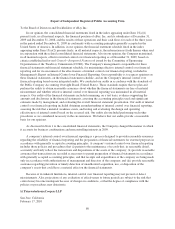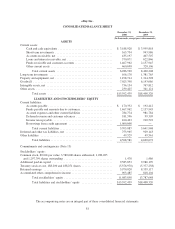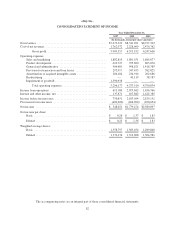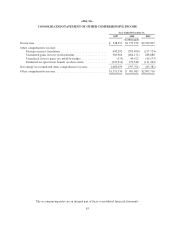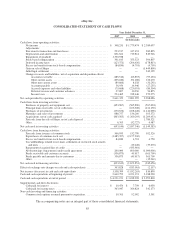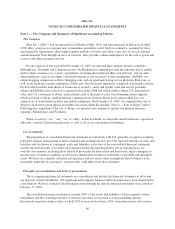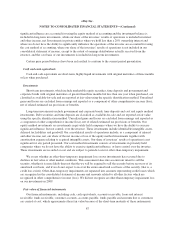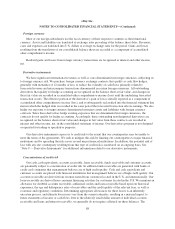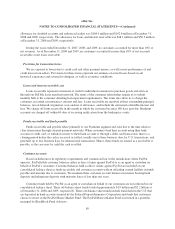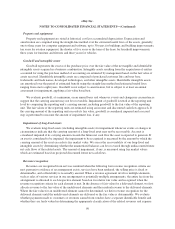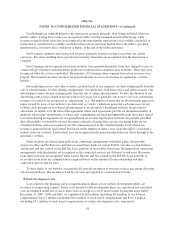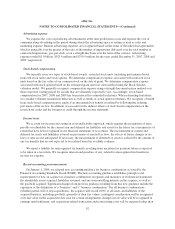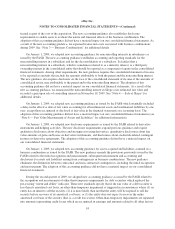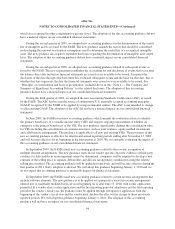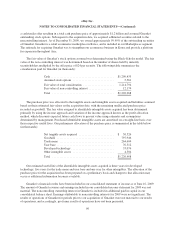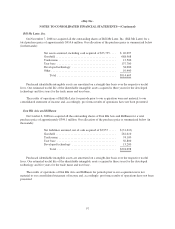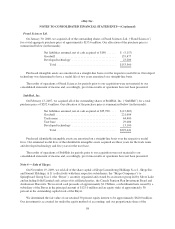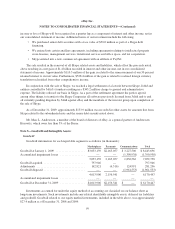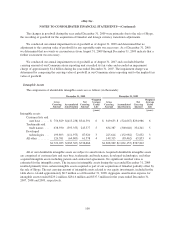eBay 2009 Annual Report Download - page 98
Download and view the complete annual report
Please find page 98 of the 2009 eBay annual report below. You can navigate through the pages in the report by either clicking on the pages listed below, or by using the keyword search tool below to find specific information within the annual report.eBay Inc.
NOTES TO CONSOLIDATED FINANCIAL STATEMENTS—(Continued)
Property and equipment
Property and equipment are stated at historical cost less accumulated depreciation. Depreciation and
amortization are computed using the straight-line method over the estimated useful lives of the assets, generally,
one to three years for computer equipment and software, up to 30 years for buildings and building improvements,
ten years for aviation equipment, the shorter of five years or the term of the lease for leasehold improvements,
three years for furniture and fixtures and three years for vehicles.
Goodwill and intangible assets
Goodwill represents the excess of the purchase price over the fair value of the net tangible and identifiable
intangible assets acquired in a business combination. Intangible assets resulting from the acquisitions of entities
accounted for using the purchase method of accounting are estimated by management based on the fair value of
assets received. Identifiable intangible assets are comprised of purchased customer lists and user base,
trademarks and trade names, developed technologies, and other intangible assets. Identifiable intangible assets
are amortized over the period of estimated benefit using the straight-line method and estimated useful lives
ranging from one to eight years. Goodwill is not subject to amortization, but is subject to at least an annual
assessment for impairment, applying a fair-value based test.
We evaluate goodwill, at a minimum, on an annual basis and whenever events and changes in circumstances
suggest that the carrying amount may not be recoverable. Impairment of goodwill is tested at the reporting unit
level by comparing the reporting unit’s carrying amount, including goodwill, to the fair value of the reporting
unit. The fair values of the reporting units are estimated using an income and discounted cash flow approach. If
the carrying amount of the reporting unit exceeds its fair value, goodwill is considered impaired and a second
step is performed to measure the amount of impairment loss, if any.
Impairment of long-lived assets
We evaluate long-lived assets (including intangible assets) for impairment whenever events or changes in
circumstances indicate that the carrying amount of a long-lived asset may not be recoverable. An asset is
considered impaired if its carrying amount exceeds the future net cash flow the asset is expected to generate. If
an asset is considered to be impaired, the impairment to be recognized is measured by the amount by which the
carrying amount of the asset exceeds its fair market value. We assess the recoverability of our long-lived and
intangible assets by determining whether the unamortized balances can be recovered through undiscounted future
net cash flows of the related assets. The amount of impairment, if any, is measured using fair market values
which are estimated based on projected discounted future net cash flows.
Revenue recognition
Revenues are recognized from services rendered when the following four revenue recognition criteria are
met: persuasive evidence of an arrangement exists, services have been rendered, the selling price is fixed or
determinable, and collectability is reasonably assured. When a revenue agreement involves multiple elements,
such as sales of various services in one arrangement or potentially multiple arrangements, the entire fee from the
arrangement is allocated to each respective element based on its relative fair value and recognized when the
revenue recognition criteria for each element is met. In the absence of fair value for a delivered element, we first
allocate revenue to the fair value of the undelivered elements and the residual revenue to the delivered elements.
Where the fair value for an undelivered element cannot be determined, we defer revenue recognition for the
delivered elements until the undelivered elements are delivered or the fair value is determinable. We evaluate
whether payments made to customers or revenues earned from vendors have a separate identifiable benefit and
whether they are fairly valued in determining the appropriate classification of the related revenues and expense.
90


